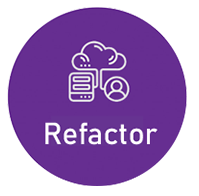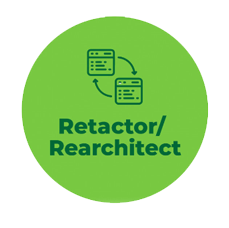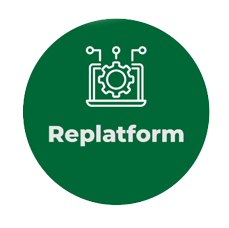Hybrid Team Blending Expertise for Dynamic, High-Performing Teams.

Our Approach
Rehosting (Lift and Shift) :
Move existing applications to a new infrastructure with minimal changes, typically to the cloud, to improve scalability and reduce costs.

Refactoring
Rework the application's code to better fit a new environment while keeping the core functionality. This approach often involves optimizing and enhancing the application.

Rearchitecting
Redesign the application’s architecture to leverage modern technologies and platforms, improving scalability, performance, and maintainability.

Replacing
Substitute legacy systems with new, off-the-shelf solutions that offer advanced features and better integration with current technologies.

Replatforming
Migrate the application to a new platform or environment with minimal code changes, often involving updates to support new features or improve performance.

Retiring
Phase out obsolete systems that are no longer needed or can be replaced by other solutions, reducing maintenance overhead and associated costs.

Our Process
Initial Assessment and Strategy
Evaluate current systems to identify key issues and opportunities, and develop a comprehensive modernization strategy.
Custom Modernization Planning
Create a tailored plan for modernization, selecting the most appropriate methods and technologies for your specific needs.
Architectural Design
Design a modern architecture that addresses existing problems and supports future growth and requirements.
Execution and Migration
Implement the modernization plan, including system updates or replacements, with a focus on minimizing disruption to operations.
Comprehensive Testing and Launch
Conduct extensive testing to ensure system performance and reliability, followed by a smooth deployment and data migration.
Training and Ongoing Support
Provide training for users and offer continuous support to address any issues and optimize the use of the new system.

